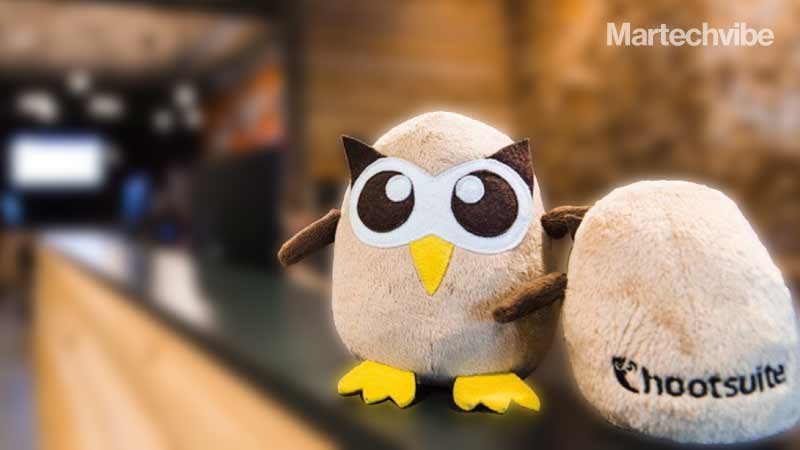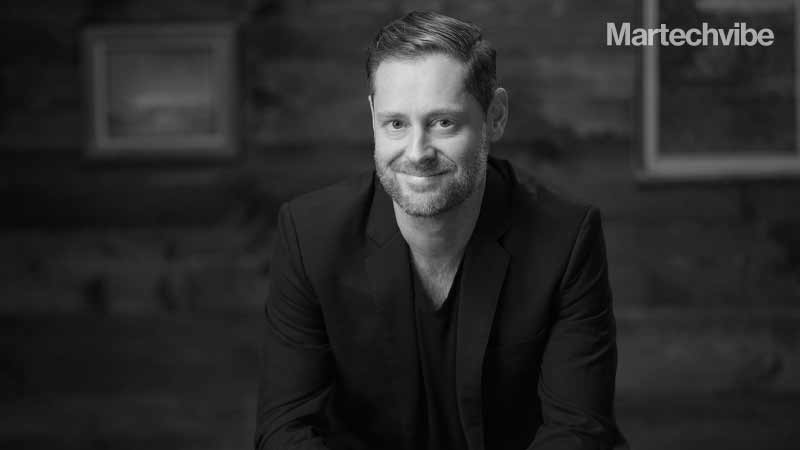Company Closeup: The Hootsuite Story
It was 2008, and Ryan Holmes was engrossed in work at his digital services agency, Invoke Media when it suddenly hit him: social media would be a gamechanger and rule the marketing industry someday. So he dived into market research to find out if there was a tool available to manage multiple social media networks. […]
Topics
What to Read Next
- Cvent to Acquire ON24 for $400 Million
- MobiLoud Unveils AI-Powered Analytics Dashboard for Mobile App Insights
- Avaya Chooses Gemini Enterprise & Google Workspace to Power AI Strategy
- Optimove Launches New Email Marketing Solution
- iMini AI Integrates Kling 2.5 Turbo & Wan 2.6 for Next-Gen AI Video Creation

It was 2008, and Ryan Holmes was engrossed in work at his digital services agency, Invoke Media when it suddenly hit him: social media would be a gamechanger and rule the marketing industry someday. So he dived into market research to find out if there was a tool available to manage multiple social media networks.
A decade ago, social networking was still a new and exciting world with tremendous potential. People in 2008 may have wondered why anyone would want a tool to post on social networks? But only Holmes had a hunch that social marketing would become a core marketing strategy that would require order, planning, analytics, and ease of control. Soon, it would get time-consuming and complex, and companies would want a tool.
After thorough research, Holmes ideated a new business vision. In 2008, he got together his Invoke team along with Dario Meli and David Tedman to develop a platform that would organise social media accounts for users and create a management tool that would allow users to combine all their social campaigns in one platform, including scheduling and publishing content and tracing real-time effectiveness.
In the same year, Holmes and his team launched the social media management tool in a Twitter dashboard, BrightKit. They began helping small businesses build customer relationships, and soon, Fortune 500 companies came in. Integrating with tools such as Salesforce, Marketo, and Proofpoint, it helped unify social across organisations. Growth was quick, and today, they have over 18 million customers, including over 800 Fortune 1000 companies.
The Journey to Inc
With over 100,000 users on the dashboard in the second year of the company’s existence, Holmes launched a contest with a prize money of $500 to both engage users and change the name of the platform. Using the owl logo of the dashboard as inspiration, a moniker named Matt Nathan came up with Hootsuite, a wordplay on the French expression, tout the suite (right now).
Within the year, Hootsuite expanded its offering to Facebook and LinkedIn. In 2009, the company became its own, spinning off from Invoke Media. The same month as Hootsuite Media Inc came to be, it received a $1.9 million funding from Hearst Interactive Media, Blumberg Capital, and other angel investors such as Leo Group LLC and Geoff Entress. Some of the company’ global clients include Domino’s, The British Museum, Marketo, MEC, Georgia State University, SXSW, Allianz, and Longchamp Paris.
Also Read: Company Closeup -The Force Behind Salesforce
Deconstructing Their Business Model
With clever marketers on board, Hootsuite decided to begin its services with a freemium model to lure customers. Users can monitor three social profiles at once, schedule posts for a specific time, attain access to monitor free apps, create Facebook ads, and also provide three analytics reports. Social media slowly illuminated its potential to the customers, the company knew they would come back for a long term plan, eventually becoming paying customers. They have successfully raised a total of $299 million in funding.
In recent times, with the rise of digital and social marketing, Hootsuite has had to increase its employee count by seven per cent. Today, Hootsuite’s estimated revenue per employee is $250,000, and the company has 1621 employees. You do the math.
Hootsuite’s Digital 2021 Report found that over 4.2 billion active social media users spend an average of two hours and 25 minutes a day on social and messaging platforms. With such numbers and the fact that CX has become the core of business strategies, the platform decided to leverage technology to appease its customers. It recently acquired a conversational AI platform Heyday that helps brands deliver personalised CX through 1:1 messaging conversations. Through this acquisition, Hootsuite allows its clients to utilise conversational AI in marketing, sales, and support to deliver CX at scale.
Over the years, Hootsuite has documented over 13 acquisitions to enhance their business model. In January 2021, it acquired a customer engagement tool Sparkcentral that allowed it to use Sparkcentral’s automated message distribution platform to connect all facets of the customer care workflow. This was an important acquisition as Hootsuite’s customer base began to demand for better customer service.
Another important acquisition was in 2014. By that time, the platform had over 10 million users in 175 countries and the company had to sweep in innovative business strategies for a steady retention rate. With an idea to add more enterprise and premium features, the platform acquired BrightKit that would let users customise their social marketing campaigns with over 13 types of gamification features. At the same time, the company expanded its ecosystem and created Hootsuite Campaigns based on the BrightKit technology.
The Hootsuite Academy
As the demand, or rather, necessity for social media skills increased, companies began to understand that the dynamic transformation of social media is not something an intern can handle anymore. Recognising the lack of social media professionals, Hootsuite launched Hootsuite Academy in 2016. With a comprehensive online offering designed to enhance social media skills and credentials, Hootsuite Academy added hundreds of free social media videos, resources, and industry certifications.
The Hootsuite Academy collaborated with several external advisory boards of industry and subject matter experts, brands such as the Mayo Clinic, and academic institutions including Syracuse University’s Newhouse School. In the last five years, the academy has had over 550,000 students and over 1000 schools enrolled.
Also Read: Company Close-up: A Fresh Start To Customer Engagement
A Case Study Attributing to Hootsuite’s Potential
The British Museum created its social accounts in 2009, and by 2016, the demand for social content exceeded the team’s resources. While the museum believed social media to be a vital cornerstone of building lasting relationships with its visitors, it decided to restructure its social media strategy. With a motive to increase online reach and engagement and also identify possible revenue generation windows, the museum sought the help of Hootsuite.
Helping the organisation set up business operations to maximise efficiency, the British Museum was able to focus on creating quality content. Hootsuite also set up reporting features to track results, analyse it, and improve response time. With a growth of 141 per cent on Twitter, 123 per cent on Instagram, and 20 per cent on FaceBook, the British Museum witnessed their fastest overall social audience growth surpassing that of Tate, the National Gallery, the Louvre, and the Metropolitan Museum of Art.

Ups and Downs, A Rollercoaster Ride
Hootsuite and Holmes had their share of controversies and obstacles. One of the biggest pitfalls that they experienced was in 2017 when Bloomberg challenged the real valuation of the company in an article titled Hootsuite: The unicorn that never was. Before diving into it, it is necessary to note that the company had just been through a major successful transformation.
In 2015, when the company was failing to meet revenue expectations, Holmes became strongly motivated to rebuild his company with better purpose and better regard for the customer. Holmes always made tough calls, since the beginning of Hootsuite’s inception. This time, he had to overhaul his entire management team and lay off 10 per cent of his employees.
The change paid off and the company announced integrations with services such as Dropbox, launched a five million developers fund to extend third party applications and focused on international expansion. While he managed to renew the success of his company, he also ended up damaging its reputation through a crucial mistake in 2017.
Holmes was known for advocating the need to be active on social media but the news article put him on the wrong side of the court, for the briefest of moment. The now-popular exchange on Twitter between Holmes and the Bloomberg reporter regarding the article that challenged the company’s actual revenue, brought out the ugly side of the founder who later apologised for his insolent comment. The backlash was worse than expected because Holmes was a social media expert who should have known better. In spite of the hit, Hootsuite and Holmes picked themselves up and continued to focus on the growth of the company, amid their competitors such as Buffer, Zoho Social, Sprout Social, Meltwater, and Sprinklr Modern Engagement.
In 2019, the company was in the news again with its decision to lay off over 100 employees in another move to restructure and realign its business model to better serve its customers. After steady growth, Bloomberg revealed that the company had hired Goldman Sachs to possibly sell the company at a valuation of approximately $771 million. But the company did not go through with the sale as the initial offer was lower than expected.
Amid all the chaos, Holmes made a rather surprising announcement. He stepped down as CEO, only to remain a chairman. Enter, the new CEO of Hootsuite – Tom Keiser.
Also Read: Company Close up: Zendesk — Adding Zen To Your Marketing
Plans of the new CEO
It has been 14 months since his appointment, but ironically, Keiser has still not stepped foot in the head office of Vancouver due to the pandemic. Running a 1000-person company that he has not met yet is a difficult job but it hasn’t stopped the 55-year-old veteran executive to inspire the team to get back on their feet and forget the chaos of 2019.
After roping in other star recruits such as former LinkedIn sales lead Melissa Murray Bailey as senior vice-president of global sales; veteran chief marketing officer Maggie Lower; and Manish Kamra, senior vice-president of software development, formerly an executive with BlackBerry, Ericsson and Intel, Keiser is on his toes to transform Hootsuite into a large company that it was meant to be.
Despite a minor setback when a whistleblower (employee) went public about a possible Hootsuite contract with US Immigration and Customs Enforcement over the agency’s alleged aggressive anti-immigration measures, the problem rolled over pretty quickly.
Sitting in his apartment in San Francisco, Keiser plans to shift focus from mid-market and small and medium-sized enterprises to larger corporations. He hopes to acquire better results by leading subscription software vendors, cutting down on expenses, and improving customer service and experience to better Hootsuite’s acquisition and retention rates. Heyday acquisition is just the beginning.








































































































